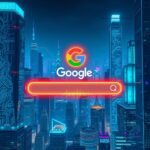Ever feel like Apple’s design moves are like breadcrumbs leading to a bigger picture? I recently stumbled upon a fascinating article on TechCrunch about Apple’s “Liquid Glass” design aesthetic, and it got me thinking: are we getting a sneak peek at the future of Apple’s AR glasses?
The article highlights how Apple’s increasingly embracing a seamless, almost ethereal visual language across its interfaces. Think glassy surfaces, subtle gradients, and a focus on depth and layering. It’s less about stark lines and more about a fluid, immersive experience. TechCrunch even suggests this is a deliberate move to prepare us for Apple’s rumored AR glasses, supposedly dropping next year.
And honestly, it makes sense. AR glasses need to feel intuitive, almost invisible. Bulky, clunky interfaces won’t cut it. We need designs that blend seamlessly with the real world, enhancing our reality instead of clobbering it. This “Liquid Glass” approach could be the key.
Consider this: Statista projects the augmented reality (AR) market to reach nearly $90 billion in revenue by 2027. That’s a massive market ripe for disruption, and Apple, with its design prowess and loyal following, is perfectly positioned to lead the charge. Apple’s been awarded patents related to AR/VR headsets. (Source: https://www.patentlyapple.com/)
This isn’t just about aesthetics, though. Think about the user experience. A fluid interface could help users navigate AR environments more easily, reducing cognitive load and making the whole experience feel more natural. Imagine interacting with virtual objects in your living room, the interface subtly overlaying the real world, feeling as intuitive as using your iPhone.
Apple’s not the only company eyeing the AR prize, of course. Meta’s already invested heavily in the metaverse and AR/VR technology. However, Apple’s strength has always been in its ability to simplify complex technology and make it accessible to the masses. If anyone can make AR glasses a mainstream success, it’s Apple.
5 Key Takeaways:
- Apple’s “Liquid Glass” design might be a preview of their upcoming AR glasses interface.
- The shift towards seamless, fluid interfaces is crucial for a positive AR user experience.
- The AR market is projected to explode in the next few years, presenting a huge opportunity for Apple.
- Apple’s focus on simplifying technology could give them an edge over competitors in the AR space.
- The design of AR interfaces goes beyond aesthetics; it’s about making the technology intuitive and accessible.
FAQ: Apple’s AR Glasses – What We Know (and What We Don’t)
-
What is “Liquid Glass” design? It’s Apple’s current design aesthetic characterized by glassy surfaces, subtle gradients, and a focus on depth, creating a fluid and immersive visual experience.
-
Are Apple AR glasses confirmed? No, Apple hasn’t officially announced AR glasses, but rumors and patents suggest they’re in development.
-
When are Apple’s AR glasses expected to be released? According to the TechCrunch article, rumors point to a 2026 release.
-
How much might they cost? Price is purely speculative at this point, but given Apple’s pricing history, expect a premium price tag.
-
What features are rumored for the AR glasses? Rumors include hand-tracking, spatial audio, and integration with Apple’s ecosystem.
-
Will they replace iPhones? Unlikely in the near future. They’re more likely to be a complementary device, offering a new way to interact with technology.
-
What are the biggest challenges Apple faces in developing AR glasses? Battery life, processing power, and creating a comfortable and socially acceptable design are key challenges.
-
How will these glasses be different from existing AR/VR headsets? Apple is expected to focus on a sleek, lightweight design and a user-friendly interface.
-
Will Apple open up the AR glasses platform to developers? It’s highly likely. A thriving app ecosystem is crucial for the success of any new platform.
-
Why is AR important for the future of technology? AR has the potential to revolutionize how we work, learn, communicate, and entertain ourselves by blending the digital and physical worlds.







